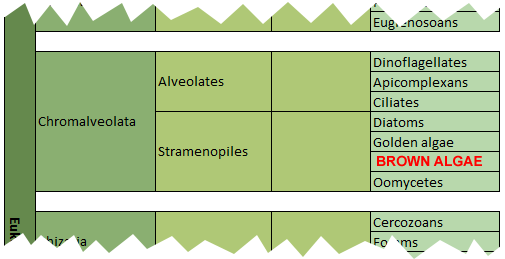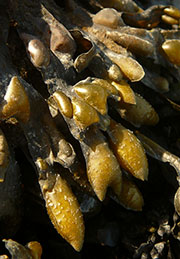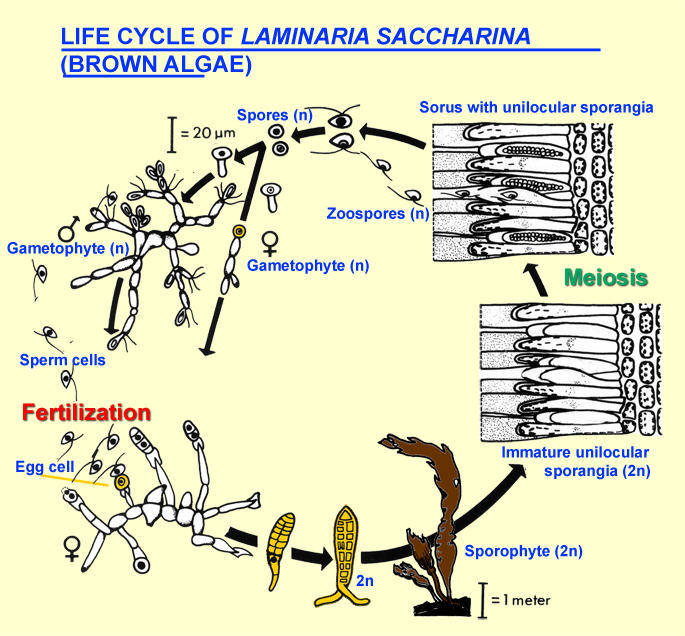Characteristics of the life cycle of Brown algae
Brown algae (Phaeophyta) are named after their typical brownish, olive green color caused by Fucoxanthine. This pigment is called after the alga
Fucus (Bladder wrack; see here above), which is also abundant at the Dutch coast. With help of this pigment Brown algae can also utilize yellow and green light for assimilation. All Brown algae are multicellular and all go through an alternation of generation: diploid (2n) and haploid (n) phases alternate. The haploid and diploid life form look very different, they are heteromorph. The diploid form, the diplont or sporophyte, is the dominating form in these life cycles. On this webpage Laminaria and Fucus are further inspected.
Meer data about algae and a large colletion of photographs can be found under
www.algaebase.org/
The best known Brown alga is probably
Laminaria saccharina (kelp). It grows in deep coastal waters on a stony or rocky substrate in the strong tidal zone (kelp forests). Laminaria can live until a depth of 60 meter. It is the largest, most complex and highest developed species of algae. The brownish, flat and thin thallus blade floats under the surface and is joined by a long stem-shaped stipe to a holdfast (hapteron), which is attached to a stone or rock. This holdfast prevents the alga to drift away or to be disrupted by the tidal movements.
By the end of the growth season, at the edge of the thallus sporangia are formed in which meiotic division give rise to two types of haploid (bi-flagellated) zoospores with a similar appearance. Once attached to a solid substrate, the one type of zoospores develops into a male gametophyte that produces sperm cells, whereas the other zoospores lead to a female gametophyte producing egg cells. In the genus Laminaria these gametophytes, the haploid life forms, appear as small ramified filaments. However, in some other Brown algae the oosphere-producing oogonia and the sperm cells producing antheridia are either together in the same receptaculum (e.g. in Fucus) or in a separate receptaculum (female side) and conceptaculum (male side). Common to all Brown algae is that the sperm cells are liberated in the water and swim with help of two flagels of uneven length. The egg cells are sessile and they produce pheromones (e.g. fucoserratene in Fucus, multifidene in Culteria, dictyopterene C in Dictyiota and Lamoxirene in Laminaria ;I. MAIER. 1982. Protoplasma 113: 137-143) which act as a chemotactic agent that attracts sperm cells. When the encounter between sperm cell and egg cell leads to successful fertilization, a zygote is formed from which a diploid sporophyte can arise through mitotic divisions.
Laminaria: life cycle
Laminaria: thallus, sporangia and spores
| Thallus of Laminaria with sporangia |
| Laminaria saccharina |
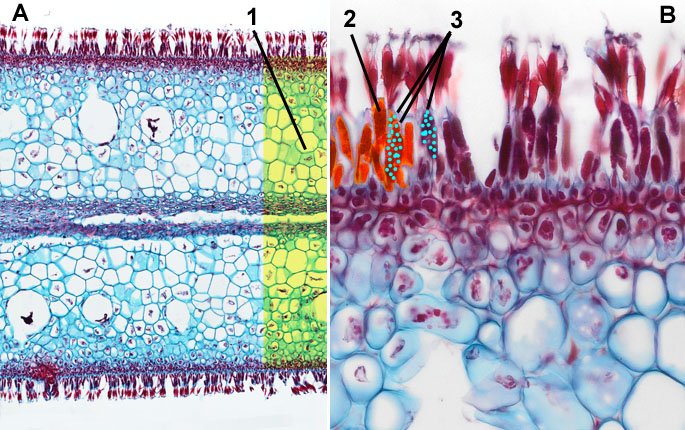
|
| Cross-sections. A: 1 thallus (colorized in yellow); B:2 sporangia (colorized in orange) with spores (colorized in blue) |
| Laminaria turox |
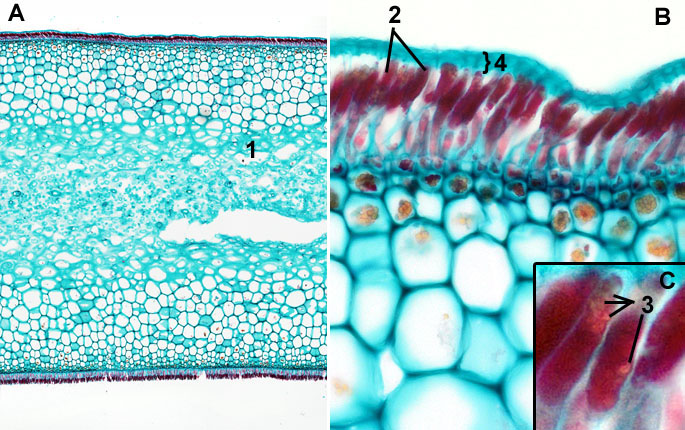 |
| Cross-sections. A: 1 thallus; B:2 sporangia and 4 cuticula; C: 3 spores |
Fucus: life cycle
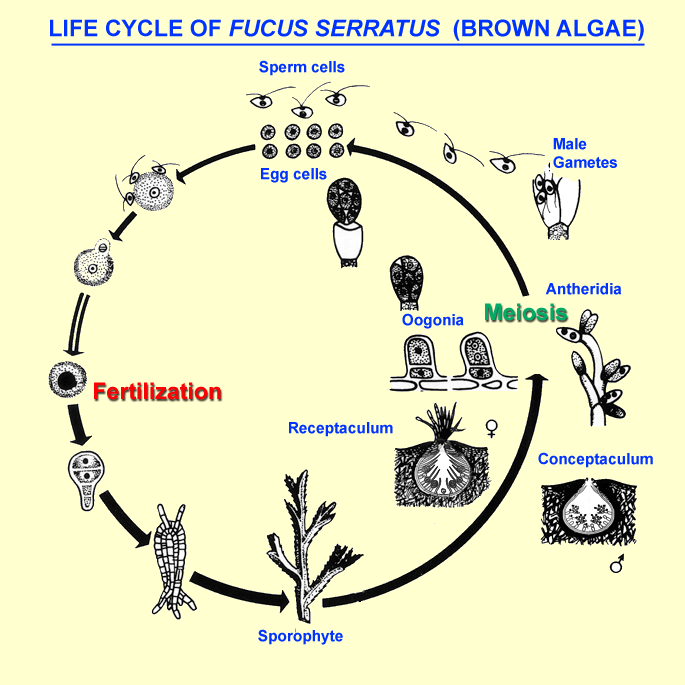 |
| Life cycle of Fucus serratus |
| To a macro-photograph of the reproductive organs in Fucus |
